Stand Out on LinkedIn: Secrets to Crafting a Winning Profile

LinkedIn has enormous potential for growing your business.
While X/Twitter or Instagram are considered cooler platforms, LinkedIn is still the best choice for building a brand that boosts your business.
Why?
There are two reasons.
First, LinkedIn has one of the best potentials for organic growth. It’s much harder to grow organically on platforms like Instagram or Facebook, where your reach is limited until you pay to promote your content.
LinkedIn still pushes creators with good content, allowing them to get thousands or even millions of views on brand-new accounts.
Second, let’s say you reach out to someone with an offer, and they don’t know you. What do you think they’ll do?
They’ll probably Google your name and see your LinkedIn profile in the first results.
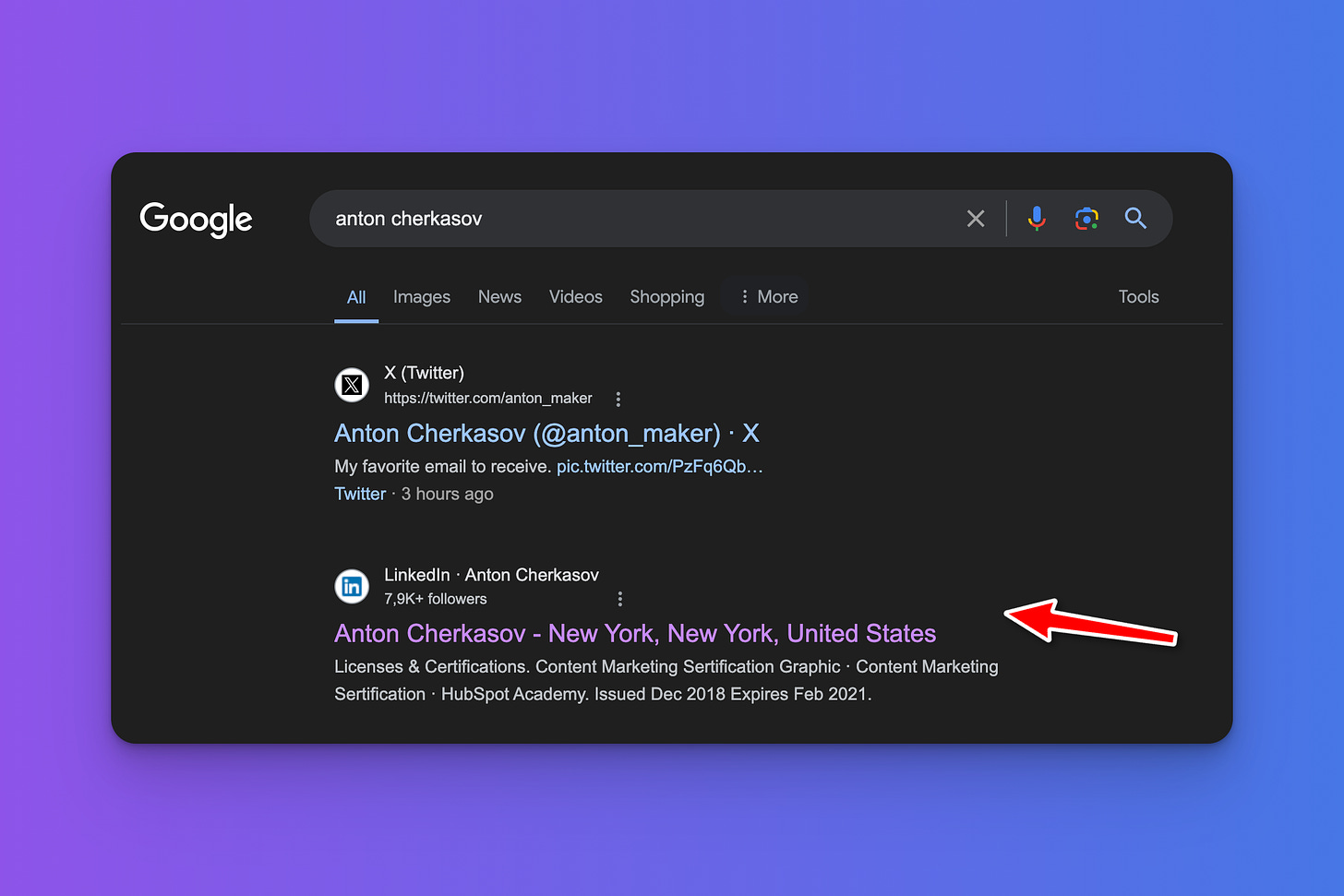
That’s why your LinkedIn profile is a valuable asset.
Today, I want to show you how to build a LinkedIn profile that attracts people in 2024.
Let’s dive in.
Master Plan to Build Your Brand on LinkedIn
To create an effective content strategy for business growth on LinkedIn, focus on the following key stages:
- LinkedIn Profile Optimization (we’ll focus on this today)
- Content Audit:
- Understand the platform. LinkedIn has unique details that you can’t replicate on other platforms.
- Content inspiration. Create a weekly habit of seeking inspiration and new ideas.
- Reverse engineering. Analyze successful posts, pay attention to type and format, and replicate them for your niche.
- Types of Content:
- Create a variety of content types that serve different interests. This might include motivational stories, observational insights, thought-provoking posts, etc.
- Consistent Posting:
- Craft a content plan you can commit to. Don’t set overly ambitious goals if you have limited time. Start with 3-4 posts per week and increase frequency gradually.
- Diversify your content to keep it fresh and engaging. For example, as a consultant, your weekly content plan could vary from operational tips to showcasing your latest project.
Foundation of Your LinkedIn Profile Optimization
Justin Welsh suggests thinking about your profile as a “sales page,” and I completely agree with him.
Here is the Profile Funnel that describes all interactions before people follow you or buy from you.
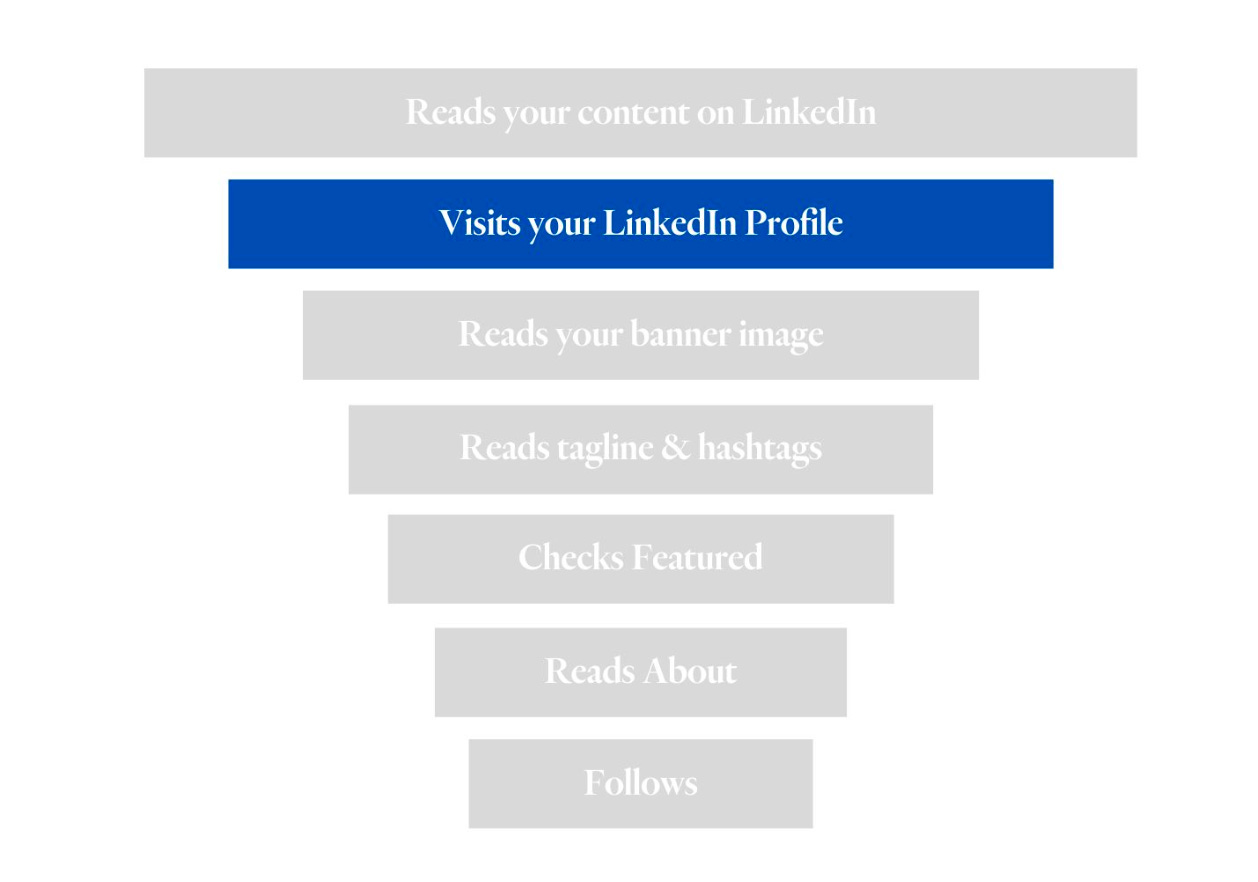
Your LinkedIn profile should build trust and an emotional connection with your target audience.
There are multiple key pieces that impact how people perceive you or your brand on LinkedIn:
- Banner image
- Profile photo (headshot)
- Tagline
- Badges
- Featured section
- About section
Your profile should clearly explain to everyone who visits your page what you do, who you help, and what outcome they can expect from you. And remember, you have 3-7 seconds to make this clear due to attention deficit.
We should master every part of your profile mentioned above to stand out on a crowded platform with over 600 million users.
I’ve prepared examples of great profiles for inspiration. You can access the Notion page with 10 LinkedIn profile examples here. It’s free.
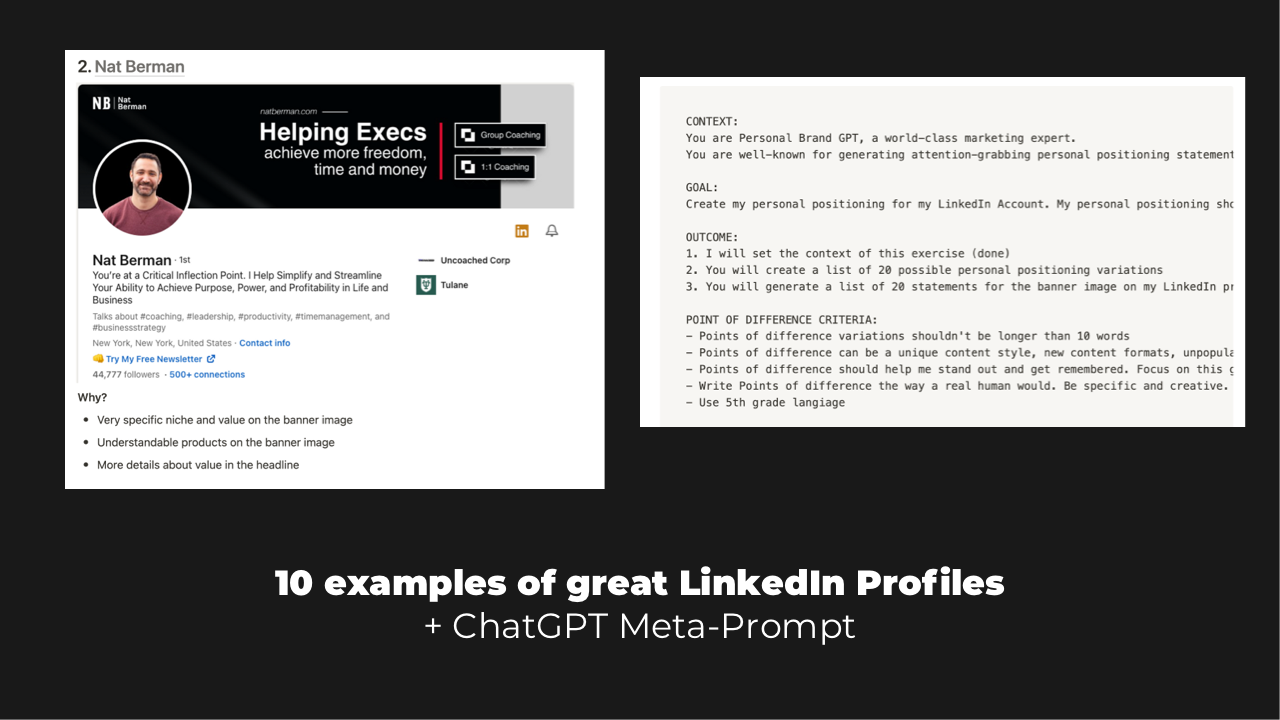
Let’s start optimizing your profile.
Your Banner Image
How to build a kickass LinkedIn profile?
The first step is your banner image. This is what people see first when they come to your profile.
It should build trust and make them want to learn more about you.
Take a look at Justin Welsh’s banner image: it’s clean, easy to understand, and specific. At first glance, we see that he has a product for LinkedIn creators.
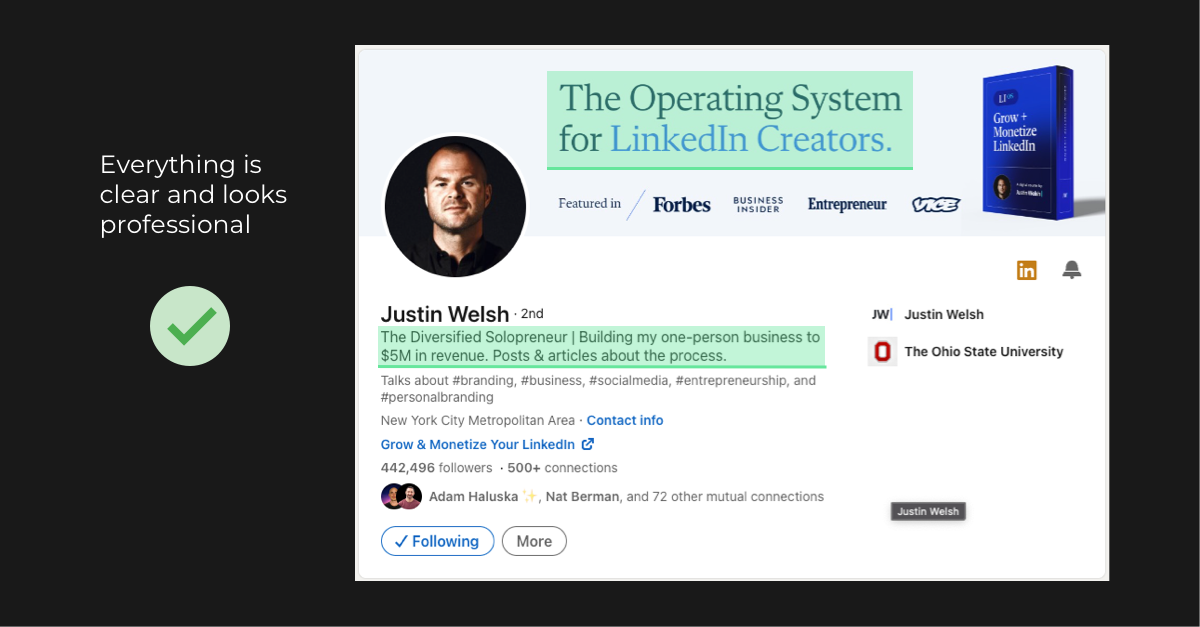
Forget about pictures of nature or your home city. We are here to do business, right? That’s what visitors should get from the first look.
Compare it to this example:
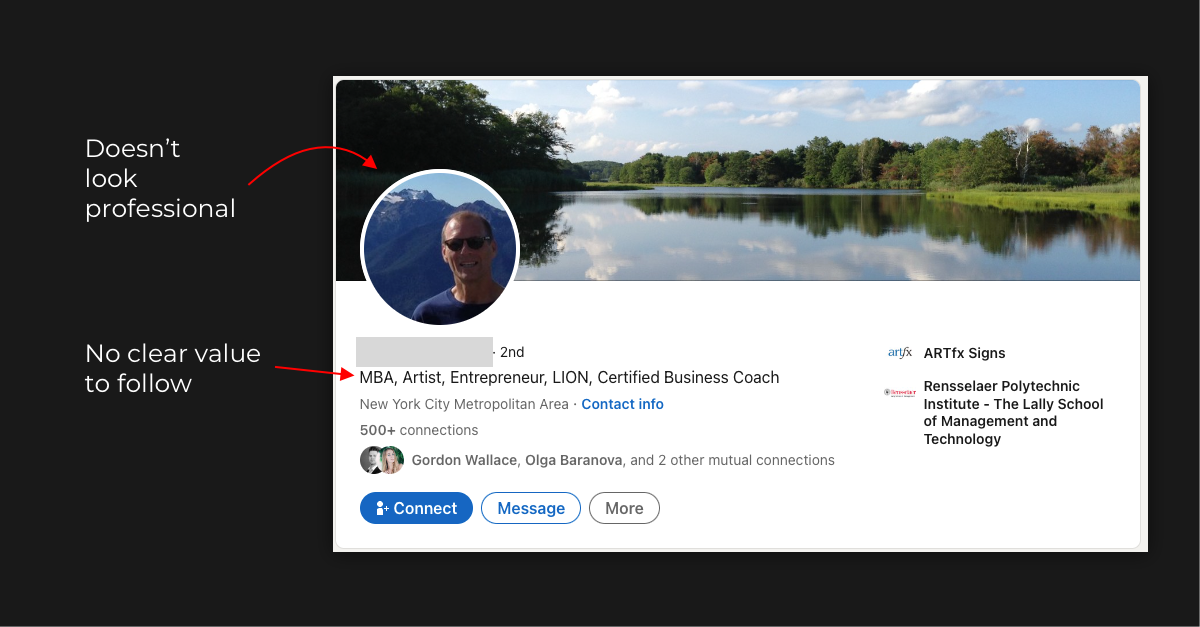
Here is an example with two professionals from the same niche.
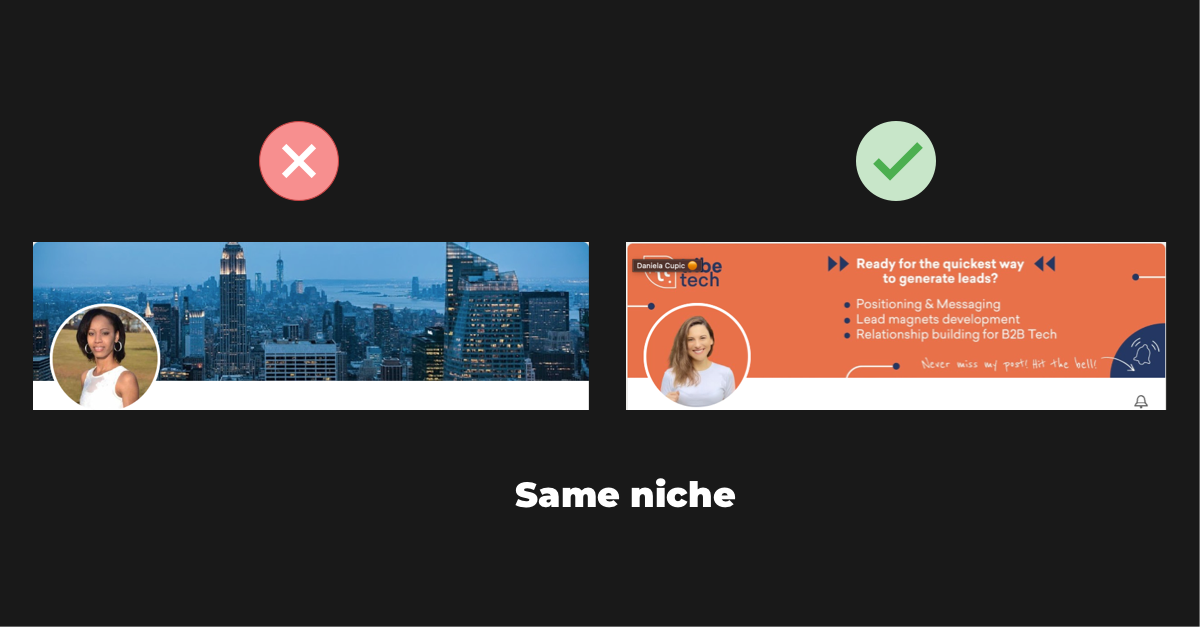
Whom will you hire? One profile builds trust; the other doesn’t.
What to Write on the Banner?
It should be a short and catchy headline that explains what you do or what you can bring. Think about a one-liner pitch.
Here are some great examples:
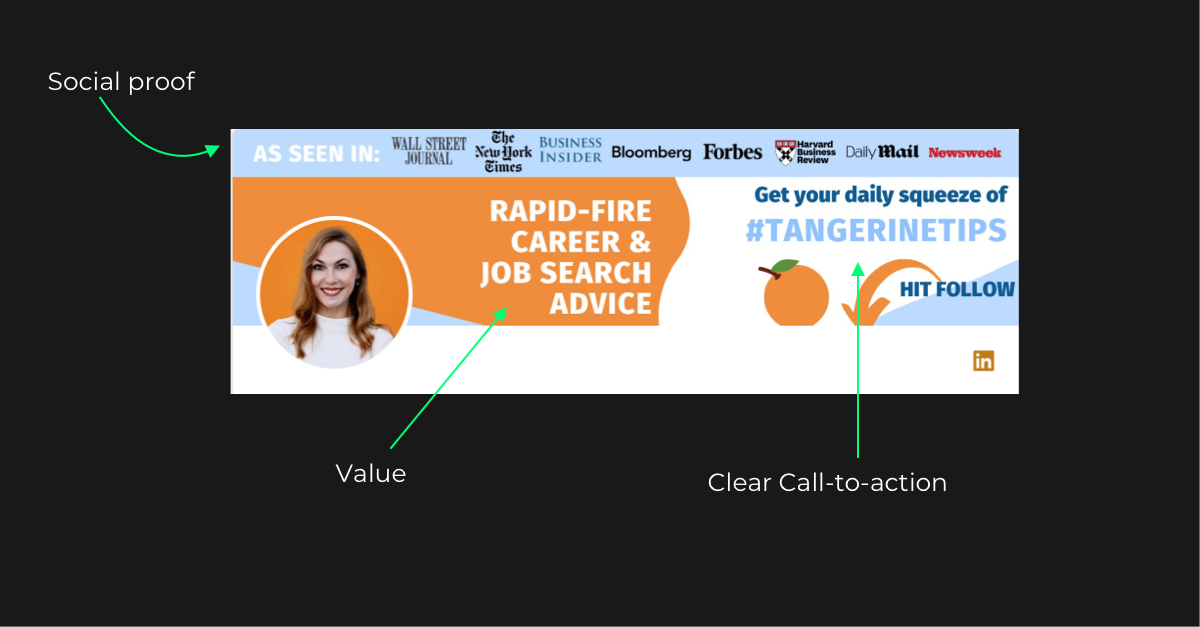
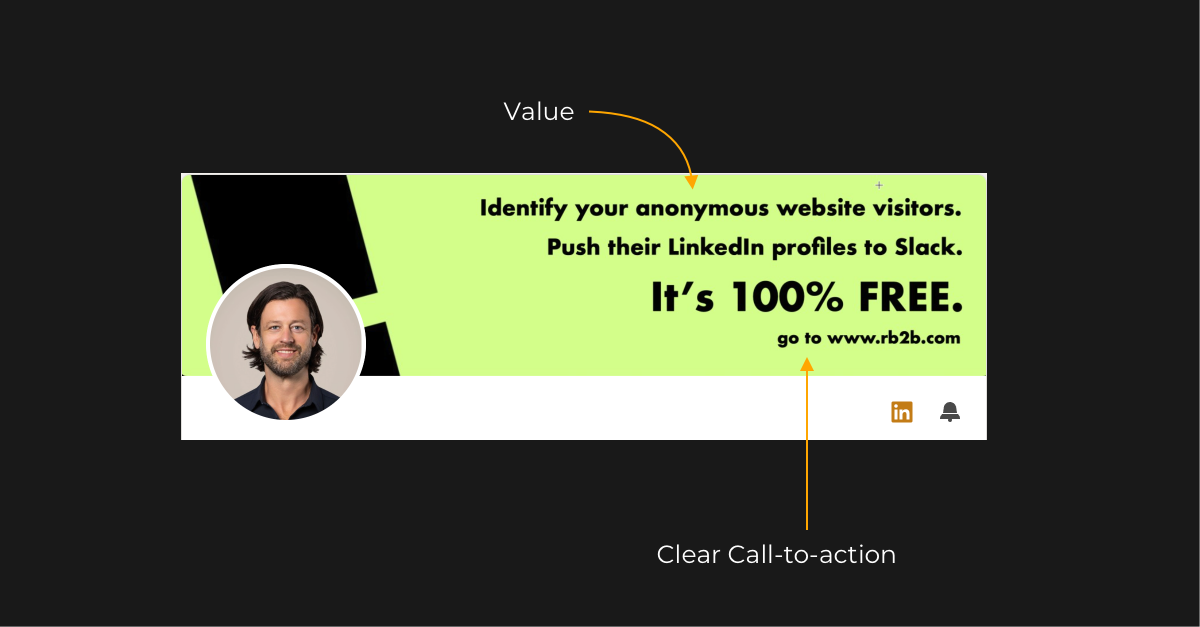
AI Tip: You can use ChatGPT to help you craft a good headline for the banner. The more detailed your prompt, the better results you will get.
I like to use prompts with Context, Goal, Outcome, and Details because they give more specific outcomes than general prompts like “generate 10 headlines for my LinkedIn profile.”
Here is an example of a prompt to generate positioning for the banner image and tagline.
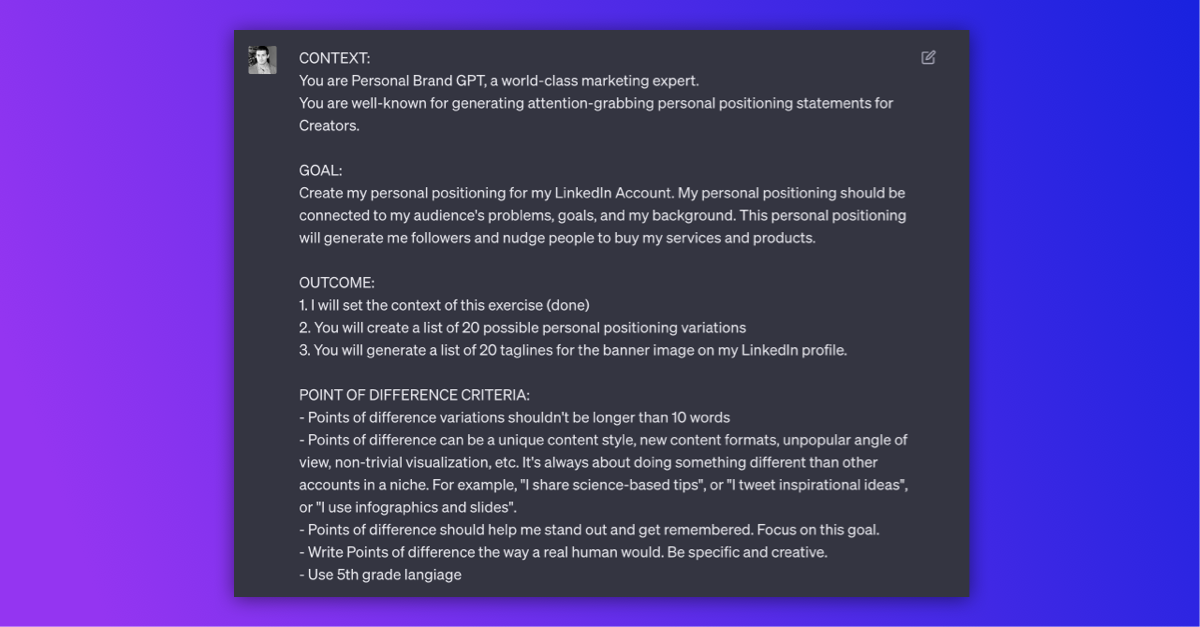
You can download the full prompt here.
Your Profile Photo
The next step is your photo.
Don’t overcomplicate it. Simply choose a professional and recent photo.
Another way to create a headshot is by using AI. You can create headshots on HeadshotPro or Aragon. Just upload your best pictures and get headshots in 10-15 minutes.
Last year, I tried HeadshotPro and was quite satisfied with the results. I uploaded my photos, and it generated 120 headshots in three different styles. From these 120 images, I chose 7 that I really liked. It took only 30 minutes to create professional headshots.
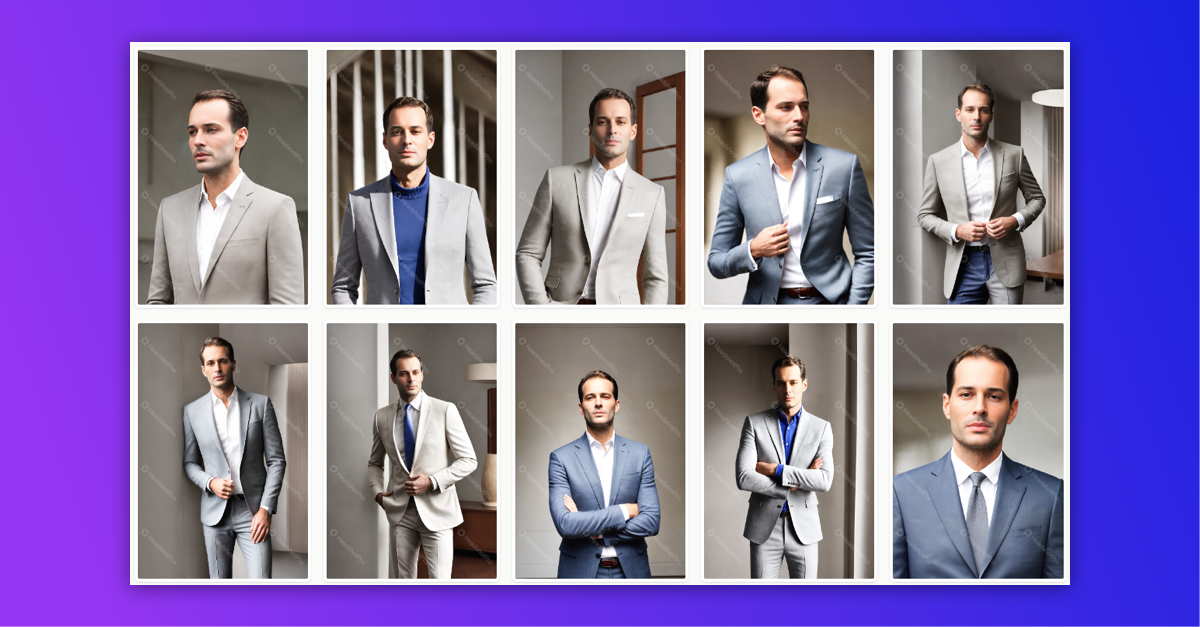
Your Tagline/Headline
Some people get very creative with their taglines, making them hard to understand.
Being overly creative is not our goal.
The purpose of the tagline is to explain what you do and extend the positioning presented in your banner image.
It should be short, clear, and make people interested in learning more about you.
There are 3 main ways to create your tagline:
- The Value Statement: Who do you help? How do you do it? What outcome should they expect?
- The Curiosity Booster: What unique and interesting project are you working on? What can people expect from you?
- Social Proof: Do you have case studies with popular or famous brands? Or any achievements related to your business and niche? Mention them here.
Here is a great example from Austin Belcak that clearly explains the value and problems he solves.
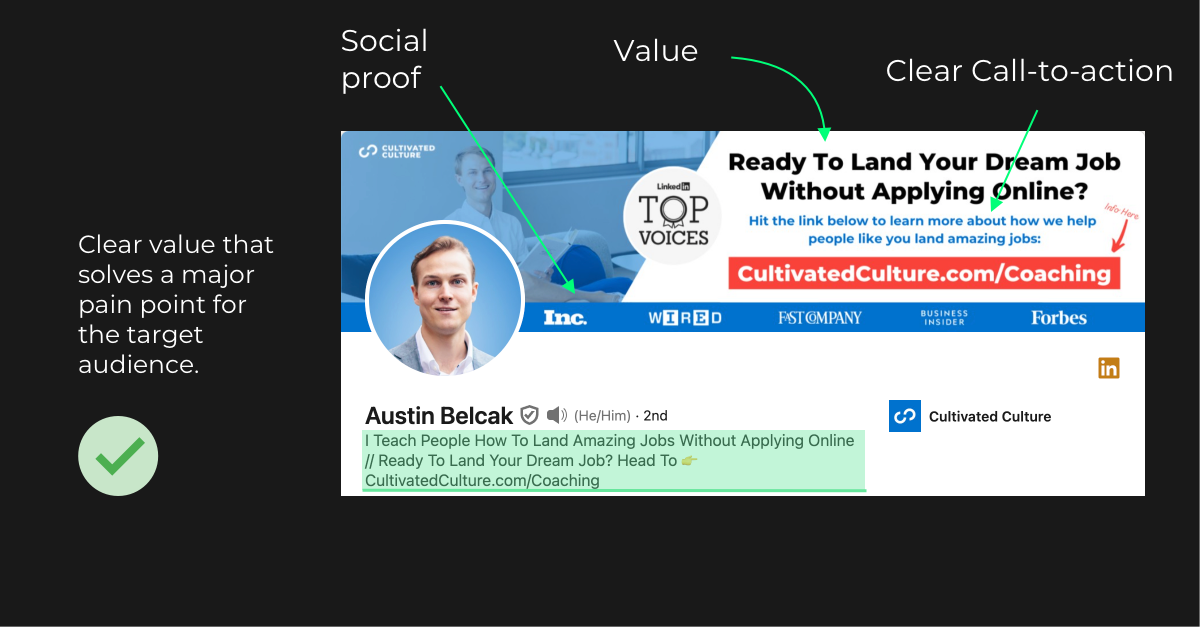
Here is a comparison of two profiles: one features a very broad tagline, while the other clearly explains what the expert does and whom he helps.
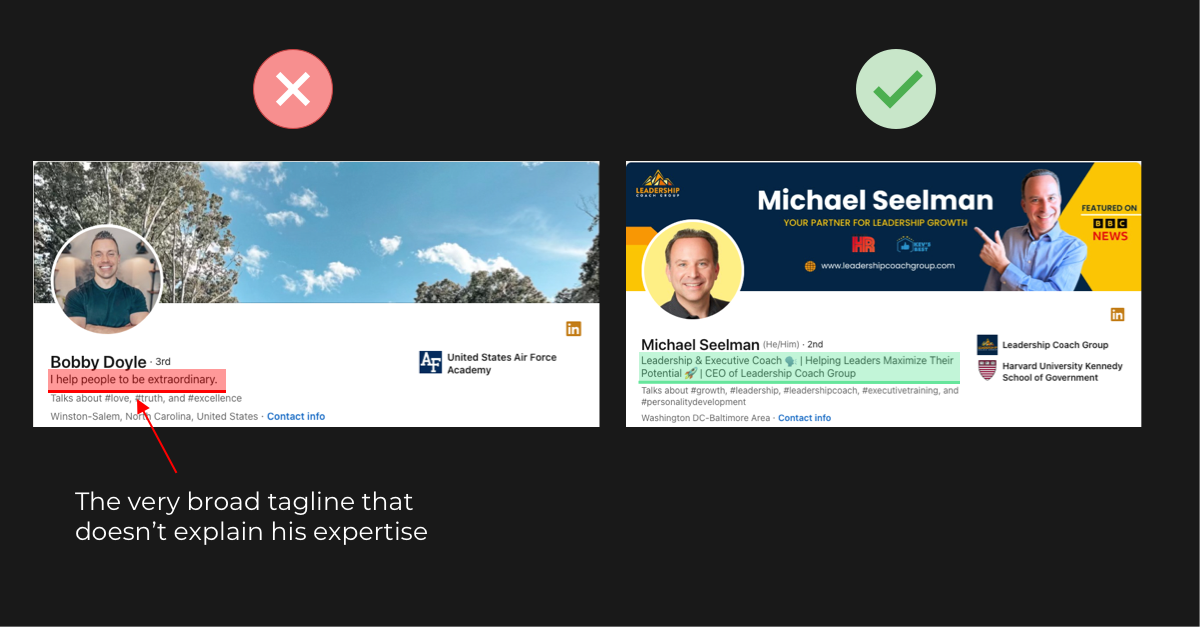
Skip being creative or mysterious. Be clear.
Top Voice Badges
A Top Voice Badge is a LinkedIn feature awarded to users who consistently produce high-quality content and engage actively on the platform.
Getting one of these badges builds credibility, and it’s not hard to obtain.
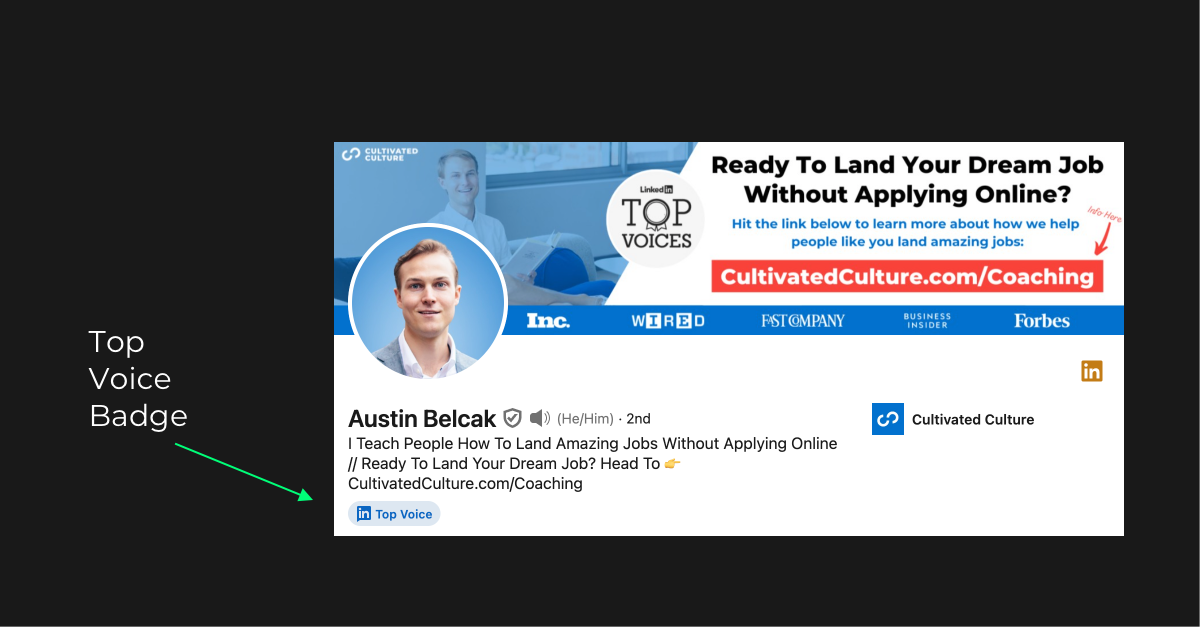
Here’s how you can get them:
Start by finding a topic that aligns with your brand. Look at the list on the right side and check articles related to this topic.
Choose one article a day and add your thoughts on it. Within 3-4 weeks, you should have this little badge to add to your profile to showcase your expertise.
Featured Section
This is the place for your Call-To-Action if we think of your profile as a “sales page.”
You can direct people from LinkedIn to your website or newsletter.
Some people try to add as many links as possible to show everything they have. This is a common mistake.
Don’t overwhelm people with all your options. Remember that attention spans are short. Plus, it looks overcomplicated or too chaotic.
This is the place where you can control their attention.
Add only one, or at most two, links. Less is more.
Send people to the top of your funnel.
Some people pin their most popular posts here. That might work, but remember you don’t actually own your LinkedIn profile. So, it’s better to direct people who are interested in you to a place where you can convert them.
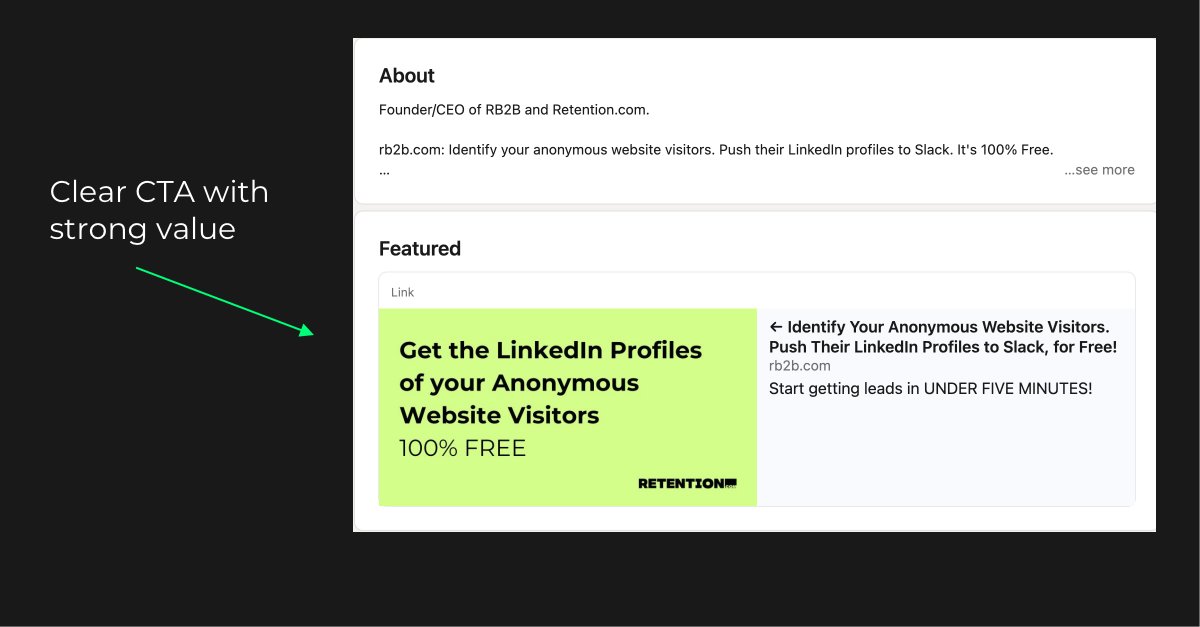
This is a good example from Jason with only two call-to-actions.
About Section
Here you can share as much as possible. This is where you can tell your story.
There are two formats that perform well:
- Short and Value-Based Approach
Here is a great example from G.
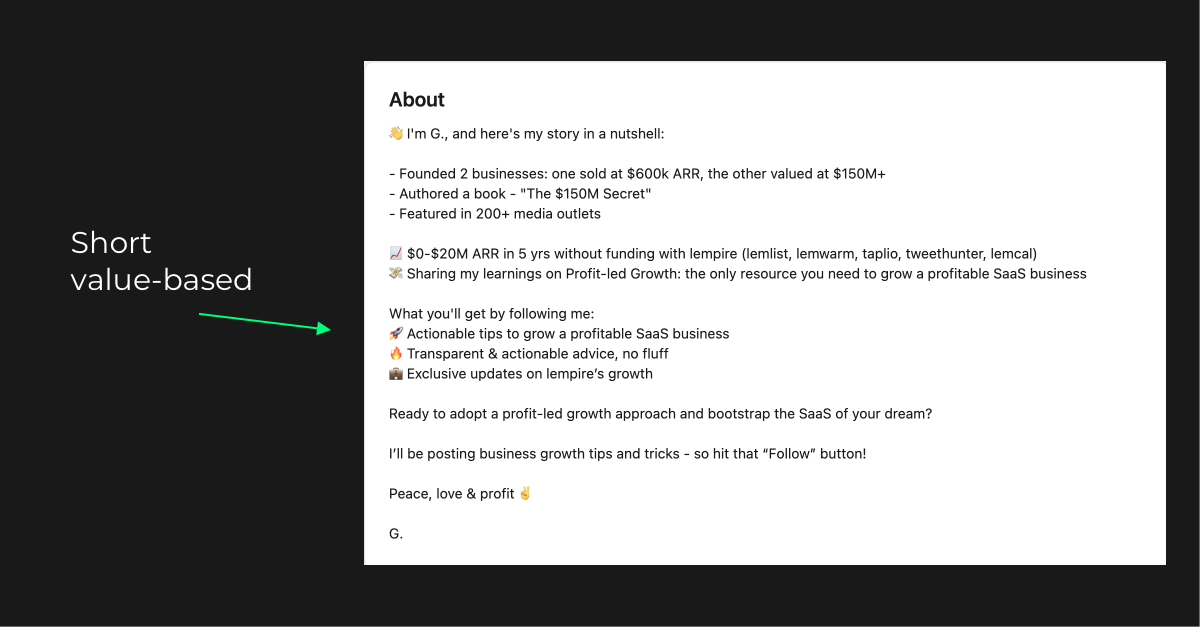
You can use a simple 3-step formula to create this story: Hook, Value, Call-To-Action.
If you look at Guillaume’s story, you will see these elements.
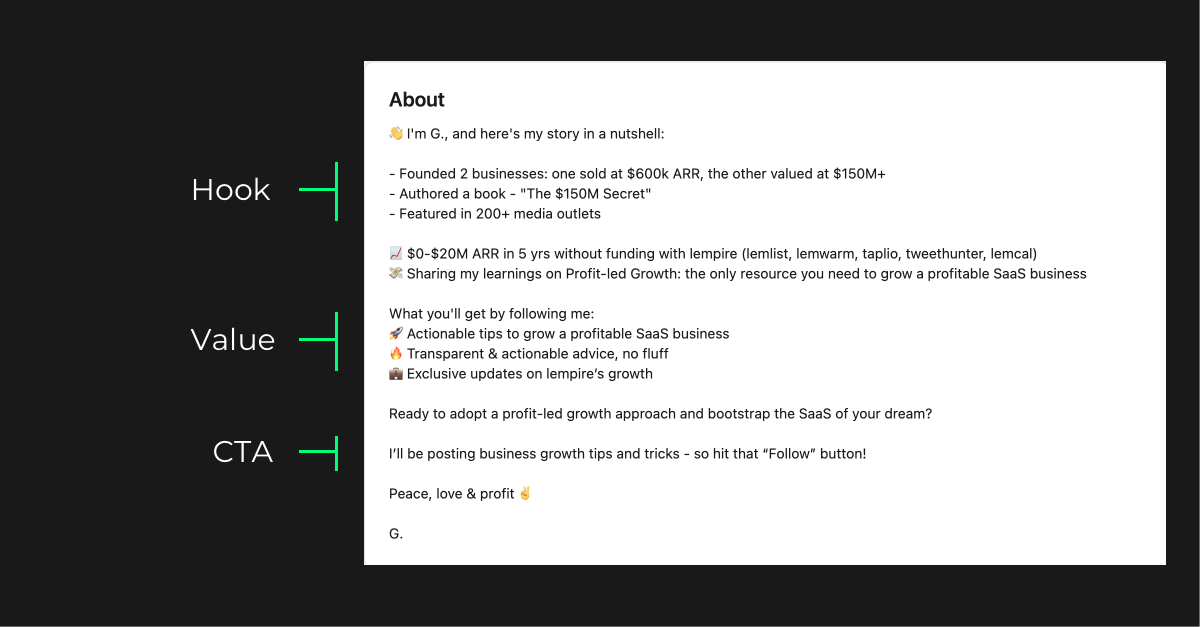
He also strengthens it with social proof.
- Personal Story
Another way to create the About section is to write a long and personal story to build stronger emotional connections with visitors.
Justin Welsh has mastered this approach.
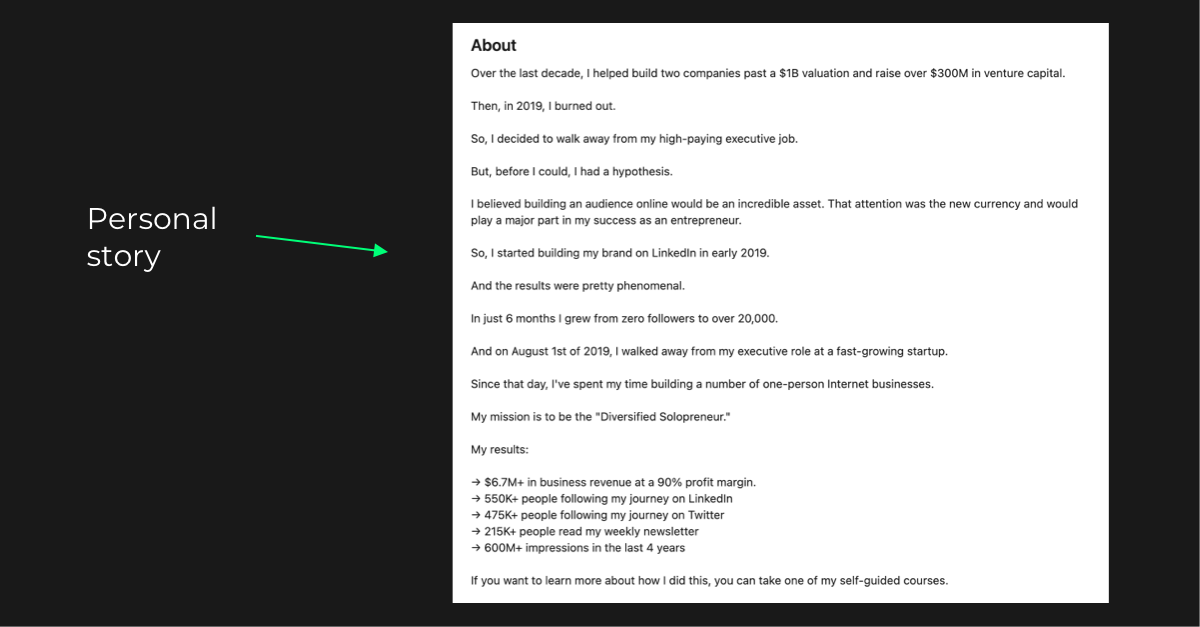
Personal stories usually start with challenges you had in the past, explaining how you solved them, and the results you have now.
Sometimes, it can be a story without results, documenting your journey, which also brings a lot of value to people.
So, choose your way and craft a story that helps people understand you better.
AI Tip: You can use ChatGPT to create a personal story. The best way to use it is to find 3-5 stories you like and provide them as examples in the prompt. Add your short bio and key moments, and ask ChatGPT to generate a personal story based on the examples you like.
Conclusion
You can find the best profile examples and AII prompts here. I created this document for your inspiration, and it’s totally free.
LinkedIn is an extremely good place for creators and business owners.
But before gaining traction, you should ensure that your profile is ready to grow.
It doesn’t matter if you use AI or create it yourself.
What’s important is that implementing these tips will help make your profile look solid and trustworthy.
And this is the first step to getting more opportunities in your business.
P.S. If you want to grow on LinkedIn and read the full guide, check out PostHero, an AI-powered LinkedIn viral post generator.
